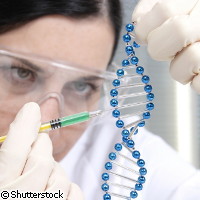Novel protein implicated in genetic control
An international team of scientists has identified a novel protein called BAHD1 that can change chromosome structure and is responsible for the silencing of gene expression. The study, which will help improve our understanding of how genes are regulated, was published in the journal Proceedings of the National Academy of Sciences (PNAS). The research was part of the eight-year EU-funded ERA-NET project PATHOGENOMICS ('Trans-European cooperation and coordination of genome sequencing and functional genomics of human-pathogenic microorganisms') which runs until 2012 with EUR 3 million in funding under the Sixth Framework Programme (FP6). The research was a collaboration between 15 partners including the Paris, France-based Pasteur Institute, the French National Center for Scientific Research (CNRS), the French National Institute for Agricultural Research (INRA), and the German research institute Forschungszentrum Jülich. The development of a tumour cell is a result of a change in the genes and therefore the chemicals of a cell. One of these pathways to cancer has been discovered as a result of research into embryo development. As an adult, cells must be replaced to keep tissues and organs healthy. However, the embryo requires all its organs to be developed 'from scratch'. It seems that the awakening of genes active only in the embryo might hold the key to the growth of a cancer. Gene expression is the way that genes express their own unique genetic code. All cells have identical sets of genes, but each cell type is usually only able to use the genes that are directly related to its own function. Sometimes this system goes wrong and pathological variants of genes are expressed which can lead to genetic disorders or cancers. All the cells in any organism ¿ a human body, a flowering plant, a tree or any animal - have the same sets of genetic information, but this is expressed in many different way. For example, human skin, hair and teeth are all made from different tissues, yet the genes that provided the coding information to create these organs do the same job. The reasons they can produce such different organs from the same genetic coding is because each cell type only activates a small set of genes, meaning each is unique. Cells choose which genes to activate by regulating the structure of a substance called chromatin, genetic material which consists of strands of protein and DNA that make up our chromosomes. Chromatin strands can be arranged in tight 'clumps', thereby silencing the genes, or they can be packed more loosely, thereby activating the genes. Therefore, identifying the factors that regulate the structure of chromatin is essential; if the structure alters it can lead to neurological disorders, cancer or developmental abnormalities. The research team's discovery of BAHD1 is a step in the right direction as its presence in a cell silences the gene IGF2 which is mainly active during the development of embryos. The gene IGF2 (insulin-like growth factor 2), which is involved with embryo development, is normally inactive in healthy adults, but in many cancers it is activated causing the proliferation of cells that can lead to tumour formation. 'The discovery of the BAHD1 complex contributes to the understanding of how genes in cells of our body are regulated,' said Dr Marion Karrasch-Bott from German research centre Forschungszentrum Jülich, which is coordinating PathoGenoMics. 'Such knowledge could lead to new cancer therapies aimed at re-silencing inappropriately activated genes or to new prognosis markers.'



